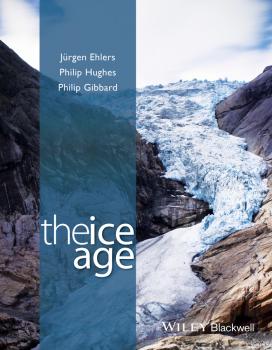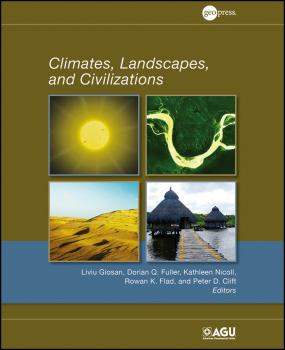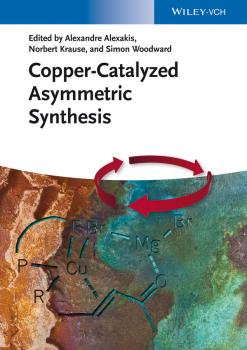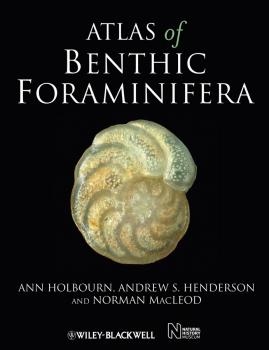Прочая образовательная литература
Различные книги в жанре Прочая образовательная литератураAdvanced Composite Materials
Composites materials is basically the combining of unique properties of materials to have synergistic effects. A combination of materials is needed to adapt to certain properties for any application area. There is an everlasting desire to make composite materials stronger, lighter or more durable than traditional materials. Carbon materials are known to be attractive in composites because of their combination of chemical and physical properties. In the recent years, development of new composites has been influenced by precision green approaches that restrict hazardous substances and waste created during production. This book ranges from the fundamental principles underpinning the fabrication of different composite materials to their devices, for example, applications in energy harvesting, memory devices, electrochemical biosensing and other advanced composite-based biomedical applications. This book provides a compilation of innovative fabrication strategies and utilization methodologies which are frequently adopted in the advanced composite materials community with respect to developing appropriate composites to efficiently utilize macro and nanoscale features. The key topics are: Pioneer composite materials for printed electronics Current-limiting defects in superconductors High-tech ceramics materials Carbon nanomaterials for electrochemical biosensing Nanostructured ceramics and bioceramics for bone cancer Importance of biomaterials for bone regeneration Tuning hydroxyapatite particles Carbon nanotubes reinforced bioceramic composite Biomimetic prototype interface
The Ice Age
This book provides a new look at the climatic history of the last 2.6 million years during the ice age, a time of extreme climatic fluctuations that have not yet ended. This period also coincides with important phases of human development from Neanderthals to modern humans, both of whom existed side by side during the last cold stage of the ice age. The ice age has seen dramatic expansions of glaciers and ice sheets, although this has been interspersed with relatively short warmer intervals like the one we live in today. The book focuses on the changing state of these glaciers and the effects of associated climate changes on a wide variety of environments (including mountains, rivers, deserts, oceans and seas) and also plants and animals. For example, at times the Sahara was green and colonized by humans, and Lake Chad covered 350,000 km2 – larger than the United Kingdom. What happened during the ice age can only be reconstructed from the traces that are left in the ground. The work of the geoscientist is similar to that of a detective who has to reconstruct the sequence of events from circumstantial evidence. The book draws on the specialisms and experience of the authors who are experts on the glacial history of the Earth. Readership: Undergraduate and postgraduate students studying the Quaternary, researchers, and anyone interested in climate change, environmental change and geology. The book provides a rich collection of illustrations and photographs to help the readers at all levels visualise the dramatic consequences of glacier expansions during the Ice Age.
Methods in Biotechnology
As rapid advances in biotechnology occur, there is a need for a pedagogical tool to aid current students and laboratory professionals in biotechnological methods; Methods in Biotechnology is an invaluable resource for those students and professionals. Methods in Biotechnology engages the reader by implementing an active learning approach, provided advanced study questions, as well as pre- and post-lab questions for each lab protocol. These self-directed study sections encourage the reader to not just perform experiments but to engage with the material on a higher level, utilizing critical thinking and troubleshooting skills. This text is broken into three sections based on level – Methods in Biotechnology, Advanced Methods in Biotechnology I, and Advanced Methods in Biotechnology II. Each section contains 14-22 lab exercises, with instructor notes in appendices as well as an answer guide as a part of the book companion site. This text will be an excellent resource for both students and laboratory professionals in the biotechnology field.
Rethinking College Student Retention
Drawing on studies funded by the Lumina Foundation, the nation's largest private foundation focused solely on increasing Americans' success in higher education, the authors revise current theories of college student departure, including Tinto's, making the important distinction between residential and commuter colleges and universities, and thereby taking into account the role of the external environment and the characteristics of social communities in student departure and retention. A unique feature of the authors' approach is that they also consider the role that the various characteristics of different states play in degree completion and first-year persistence. First-year college student retention and degree completion is a multi-layered, multi-dimensional problem, and the book's recommendations for state- and institutional-level policy and practice will help policy-makers and planners at all levels as well as anyone concerned with institutional retention rates—and helping students reach their maximum potential for success—understand the complexities of the issue and develop policies and initiatives to increase student persistence.
Climates, Landscapes, and Civilizations
Published by the American Geophysical Union as part of the Geophysical Monograph Series, Volume 198. Climates, Landscapes, and Civilizations brings together a collection of studies on the history of complex interrelationships between humans and their environment by integrating Earth science with archeology and anthropology. At a time when climate change, overpopulation, and scarcity of resources are increasingly affecting our ways of life, the lessons of the past provide multiple reference frames that are valuable for informing our future decisions and action plans. Volume highlights include discussions of multiple connotations of the Anthropocene, landscapes as a link between climate and humans, synoptic approaches to explore large-scale cultural patterns, regional studies for contextualizing cultural complexity, and environmental determinism and social theory. Straddling the fields of Earth sciences, anthropology, and archaeology and presenting research from across several continents, Climates, Landscapes, and Civilizations will appeal to a wide readership among scientists, scholars, and the public at large.
Collisionless Plasmas in Astrophysics
Collisionless Plasmas in Astrophysics examines the unique properties of media without collisions in plasma physics. Experts in this field, the authors present the first book to concentrate on collisionless conditions in plasmas, whether close or not to thermal equilibrium. Filling a void in scientific literature, Collisionless Plasmas in Astrophysics explains the possibilities of modeling such plasmas, using a fluid or a kinetic framework. It also addresses common misconceptions that even professionals may possess, on phenomena such as «collisionless (Landau) damping». Abundant illustrations are given in both space physics and astrophysics.
Conservation of Tropical Birds
Conservation of Tropical Birds has been written by four conservation biologists whose expertise spans all the tropical regions of the world. It is the first book to cover all the major issues in tropical bird conservation. Current problems faced by tropical bird conservationists are summarised and potential solutions outlined based on the results of case studies. Birds are key indicators of ecosystem health, and such a well-studied group of organisms, that they provide an excellent lens through which to examine global conservation problems caused by phenomena such as climate change, declines in ecosystem services, habitat loss, fires, overexploitation, and invasive species. Therefore, the book also provides an engaging synopsis of the general issues in conservation and the problems faced by other wildlife. This book serves as an important resource and companion to all people interested in observing and conserving birds in the tropics and elsewhere.
Introduction to Environmental Engineering
Building on the first principles of environmental chemistry, engineering, and ecology, this volume fills the need for an advanced textbook introducing the modern, integrated environmental management approach, with a view towards long-term sustainability and within the framework of international regulations. As such, it presents the classic technologies alongside innovative ones that are just now coming into widespread use, such as photochemical technologies and carbon dioxide sequestration. Numerous case studies from the fields of air, water and soil engineering describe real-life solutions to problems in pollution prevention and remediation, as an aid to practicing professional skills. With its tabulated data, comprehensive list of further reading, and a glossary of terms, this book doubles as a reference for environmental engineers and consultants.
Copper-Catalyzed Asymmetric Synthesis
This book reflects the increasing interest among the chemical synthetic community in the area of asymmetric copper-catalyzed reactions, and introduces readers to the latest, most significant developments in the field. The contents are organized according to reaction type and cover mechanistic and spectroscopic aspects as well as applications in the synthesis of natural products. A whole chapter is devoted to understanding how primary organometallics interact with copper to provide selective catalysts for allylic substitution and conjugate addition, both of which are treated in separate chapters. Another is devoted to the variety of substrates and experimental protocols, while an entire chapter covers the use on non-carbon nucleophiles. Other chapters deal with less-known reactions, such as carbometallation or the additions to imines and related systems, while the more established reactions cyclopropanation and aziridination as well as the use of copper (II) Lewis acids are warranted their own special chapters. Two further chapters concern the processes involved, as determined by mechanistic studies. Finally, a whole chapter is devoted to the synthetic applications. This is essential reading for researchers at academic institutions and professionals at pharmaceutical or agrochemical companies.
Atlas of Benthic Foraminifera
An up-to-date atlas of an important fossil and living group, with the Natural History Museum. Deep-sea benthic foraminifera have played a central role in biostratigraphic, paleoecological, and paleoceanographical research for over a century. These single–celled marine protists are important because of their geographic ubiquity, distinction morphologies and rapid evolutionary rates, their abundance and diversity deep–sea sediments, and because of their utility as indicators of environmental conditions both at and below the sediment–water interface. In addition, stable isotopic data obtained from deep–sea benthic foraminiferal tests provide paleoceanographers with environmental information that is proving to be of major significance in studies of global climatic change. This work collects together, for the first time, new morphological descriptions, taxonomic placements, stratigraphic occurrence data, geographical distribution summaries, and palaeoecological information, along with state-of-the-art colour photomicrographs (most taken in reflected light, just as you would see them using light microscopy), of 300 common deep-sea benthic foraminifera species spanning the interval from Jurassic – Recent. This volume is intended as a reference and research resource for post-graduate students in micropalaeontology, geological professionals (stratigraphers, paleontologists, paleoecologists, palaeoceanographers), taxonomists, and evolutionary (paleo)biologists.









